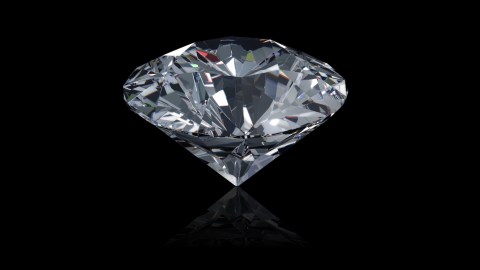Diamonds May Soon Be Your Data’s Best Friend

Image source: Sararwut Jaimassiri/Shutterstock
We all know how important it is to back up our data. The more important the data is — family photos, legal documents, and so — the more critical it is to have a copy stashed away somewhere safe. Something we don’t like to think about, though, is that our current storage media degrade over time. Hard drives, solid state drives, DVDs, you name it. For each and every one of us, a day is coming when we reach for data we can no longer retrieve. And as digital cameras and other devices continue to increase the amount of data we generate, finding ample storage space is an issue in the first place. Now the New York Times reports that physicists at City College of New York have released a paper that suggests storing our data in diamonds may be the solution. Diamonds don’t degrade as other materials do, and even a tiny sliver of a diamond smaller than a grain of rice and thinner than paper can already hold a hundred times the data a DVD can.
It’s a fascinating idea based on a diamond’s imperfections. All diamonds have them, from the Zoe diamond to the ones you see in jewelry case at the mall.
Diamonds are made up of carbon, but occasionally a nitrogen atom will sneak into the diamond’s molecular structure, creating a negatively charged “nitrogen vacancy center.” If you remove a carbon atom next to the nitrogen atom, a space is left behind, ad it’s this space in which data can be stored.
The paper’s authors have already been testing how data can be stored in these empty cavities, like these grayscale photos of Albert Einstein and Erwin Schrödinger they “painted” using electrons.

(CARLOS A. MERILES AND SIDDHARTH DHOMKAR)
The presence of absence of an electron works much like the 1s and 0s of standard digital storage. To add and electron, they use a green laser; to remove one, they use red.
DVDs encodes a 0 as a depressions, or “pit,” in its single surface. In diamond storage, though, electrons can be written in layers, allowing for much higher storage capacities. And, as any British secret agent knows, “diamonds are forever.“
An issue with the medium is that, being light-based, a blast of strong sunlight might erasedata. This is obviously something that needs to be addressed. Otherwise, researchers have joked about a person carrying her wedding photos inside her engagement ring.
Also, of course, there’s the issue of cost. A diamond of any kind can be used — it doesn’t need to be an expensive one, though “the bigger the diamond, the more defects, the more places to put information,” a grad student who worked on the paper, Jack Henshaw, told the Times. But still, it is diamonds we’re talking about. Maybe the next study should look into storing data in a cubic zirconia.





